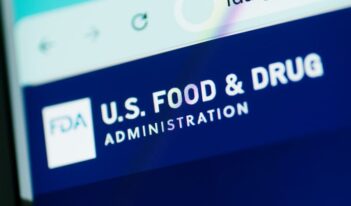
FDA adjusts maximum civil money penalties to account for inflation.
Late last year, the U.S. Food and Drug Administration (FDA) reached a $1.25 million settlement in an action against Advanced Sterilization Products, a division of a Johnson & Johnson company, after it allegedly manufactured and distributed adulterated and misbranded products. Earlier in 2013, generic-drug-maker Ranbaxy agreed to pay $500 million in fines and settlement costs after the company pled guilty to federal drug safety violations. The year before, the FDA reached a $1 million settlement with Global Medical Inc., a Pennsylvania medical device firm, after it allegedly distributed unapproved medical devices.
Large settlements and fines like these may increase in the coming years under a recent rule the FDA adopted which adjusts maximum civil money penalty amounts for some of its regulatory violations. The increase in civil penalties ranges from $1,000 up to $850,000
For example, the FDA has increased the penalty for violating safety labeling requirements. Prior to the penalty increase, a violator faced a maximum penalty of $250,000 per violation and a maximum penalty of $10 million for all violations adjudicated in a single proceeding. Under the FDA’s new regulation, those amounts have increased to $275,000 per violation and a maximum of about $10.8 million for violations in a single proceeding.
Under the Federal Civil Penalties Inflation Adjustment Act of 1990 (FCPIAA), agencies are required to update regularly the maximum penalty amounts. The FCPIAA directs agencies to adjust maximum civil money penalties at least once every four years to account for inflation.
The latest annual inflation rate is 1.6%. The FDA last adjusted its maximum civil money penalty amount in 2008.
When making the adjustments, agencies principally take into account changes in the cost of living. The FCPIAA directs agencies to calculate the percentage of each civil money penalty in relation to the Consumer Price Index at the time of the last adjustment. The agency then performs the same calculation, this time using the current Consumer Price Index. Finally, the agency determines the difference of the two percentage calculations and adjusts the civil penalty according to the amount that the current percentage exceeds the previous percentage.
Regardless of the calculation, however, the total adjustment may not exceed a 10 percent increase over the current maximum penalty.
The Bureau of Labor Statistics (BLS) produces the Consumer Price Index (CPI). CPI measures the change in prices for specified goods and services over time. These goods and services range from food and housing to transportation and medical care. The BLS also selects specific urban areas throughout the country to gather prices for those goods and services. Each month, BLS officials visit or call thousands of establishments in the selected urban areas to record the prices of these items in the particular regions.
According to the BLS, CPI reflects the inflation experienced by consumers on a day-to-day basis. The BLS further contends that CPI is generally the best tool for comparing the buying power of consumers at today’s prices, as opposed to that of consumers at an earlier time.
The FDA’s new rule also alters the procedural requirements for bringing a civil money penalty complaint against retailers of tobacco products. Previously, FDA attorneys had the sole authority to sign these complaints. However, the new regulation permits the FDA Chief Counsel to designate other FDA staff members to sign a complaint against a tobacco retailer.
The FDA believes that its non-attorney staff is generally capable of signing the complaints and reviewing the accompanying evidence. The agency indicates that a majority of the complaints brought against tobacco retailers involve allegations of selling tobacco to a minor or failing to verify a tobacco-purchaser’s age. According to the agency, these complaints are straightforward and simple, but are voluminous and pose a potential burden to the agency. Nonetheless, the FDA Chief Counsel will retain the authority to determine which staff members will sign the complaints and under what circumstances.
The FDA published the regulation as a “direct rule.” This means that the agency did not submit a prior proposal or initiate a standard public comment process prior. According to the agency, the new rule incorporates technical changes into the existing regulation that do not substantively alter the regulatory framework. Moreover, the agency does not anticipate significant opposition to the new rule.
Although the agency is using direct final rulemaking for these changes, it still has invited comments until May 19, 2014. If the agency receives significant adverse comments, it will withdraw the final rule. The FDA will then address the comments in a subsequent final rule.



